Structures of Power and the Ethical Limits of Speech
Can free speech be isolated as an absolute value when any practice of freedom is affected by the social and political context of today’s unequal power relations?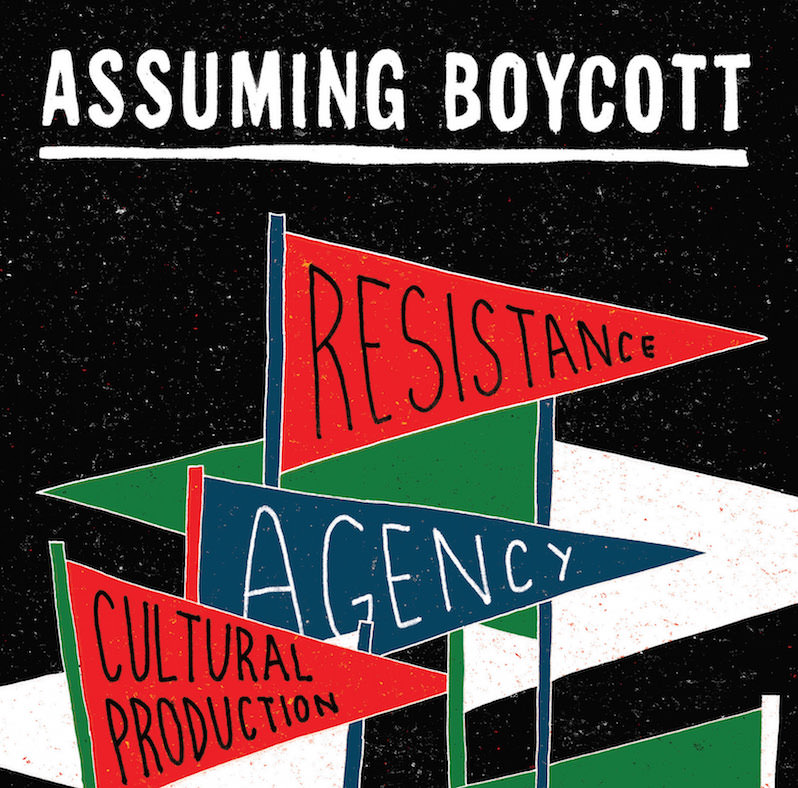 The cover of "Assuming Boycott." (OR Books)
The cover of "Assuming Boycott." (OR Books)
The cover of “Assuming Boycott.” (OR Books)
Editor’s note: The following essay is an excerpt from “Assuming Boycott” and reprinted by arrangement with OR Books.
Shortly after the salvos in support of free speech that followed the 2015 massacre of Charlie Hebdo cartoonists and editors in Paris, critical voices — while condemning the violence — started to question the binary opposition according to which unfettered speech is always heroic and suppression of speech always bad. Writers and artists have the right to work without fearing for their life, but should we be celebrating a publication, these critics asked, which stereotypes already marginalized minorities?1 Contrary to misperceptions of this debate as a polarized battle between those who support free speech and those who stand against it, critics were neither siding with the violent murderers nor advocating for more censorship. Instead, they were posing an ethical question: Can free speech be isolated as an absolute value when any practice of freedom is inevitably affected by the social and political context of today’s unequal power relations?
With the maturing of a generation shielded from overt government censorship and concerned about social justice, questions about the ethics and social effects of symbolic expression are gaining traction in the United States and other liberal democracies at the expense of an absolutist defense of free speech. It is increasingly recognized that the equal right to free expression has unequal value for unequal actors in the public sphere. Inevitably, the social position from which you speak determines not only who hears you, but also how they hear you — how they interpret your words and how much value they attribute to them. But what does all this mean when it comes to specific, practical decisions about censorship and self-censorship?
Both U.S. and, to a lesser degree, international law protect all sorts of hateful speech from government intervention. It is a popular misperception that there is a line to be drawn between prohibited “hate speech” and protected “free speech”: in the U.S. there is no law banning “hate speech” and, hence, no legal definition of what constitutes such speech. As a result, unless they directly incite to immediate violence, all manner of offensive opinions can be freely expressed in this country.2 Broad constitutional protections mean that, when it comes to artistic expression, direct government censorship is limited and declining. In contrast, private constraints on expression are on the rise: they range from the limits set by social media platforms (which often do prohibit “hate speech”) and the self-censorship resulting from market demands to programmatic decisions (and excisions) made in response to political pressure exercised by ad hoc civil society groups.
How do these pressures affect American cultural institutions, which are increasingly supported by private foundations and donors and thus outside the reach of First Amendment law, even as they claim commitment to free speech principles? When deciding whether to persist with potentially controversial programming, cultural institutions — both private and public — take into account far more than the limits of the law: there are questions of responsibility to a community, the need to welcome diverse audiences, and the imperative to keep funding streams flowing. And this may appear as a good thing, until one finds that, in practice, there is no consensus on what is offensive or hateful speech and what responsibility demands.3
Private funding kept many U.S. institutions sheltered from the political ire of the culture wars. In the 1990s, culture warriors from the religious right focused on public funds going to “offensive art” and rarely targeted work supported by private funds. Today, however, campaigns against cultural institutions do not make a distinction between public and private, and are increasingly coming from communities that are, in the broad sense, on the same side ideologically: groups concerned about racial and economic privilege, social inequality, or various forms of discrimination. Behind an institution’s stated social-justice commitments, such groups detect practices of persistent institutional racism and discrimination. As a result, the battles are fought not through open ideological disagreement, but over the implications of certain practices: about how artifacts from different cultural traditions are displayed, about who participates in museum programs, about intentional — but even more frequently unintentional — inclusions and exclusions. Activist groups use social media to spread their message and sometimes force institutions to cancel programing. Private cultural institutions, which are not compelled under the Constitution to protect freedom of speech, are vulnerable targets of such campaigns.
In summer 2015, responding to a wave of complaints, Boston’s Museum of Fine Arts abruptly canceled “Kimono Wednesdays,” an interactive weekly event in which audience members were invited to wear a replica of the Uchikake (overcoat) worn by Camille Doncieux in Claude Monet’s iconic 1876 painting “La Japonaise.” The event had been a hit in Japan, but once imported to the United States it sparked outrage and was condemned as “Orientalist.” The MFA Boston was criticized for its presumably uncritical support of “archaic values and belief systems that promote racism by way of cultural appropriation and cultural insensitivity.”4 Initially resisting, the MFA eventually bowed to the protesters and canceled “Kimono Wednesdays.”
In a similar situation, a few months earlier, complaints from indigenous students led to the removal of a student art project at Santa Barbara City College (SBCC): a teepee built to fulfill a time-based performance assignment in which the students intended to bring people together and offer a space for connectivity, engagement, and reflection. Some indigenous SBCC students were offended by the way in which the teepee, an architectural form developed by Native American peoples of the Great Plains, was used as material in an art project. They protested what they saw as “negative stereotyping”5 and were joined by others who called the use of the structure “disgusting and racist,” an “insult,” and an example of “white privilege.”6
Cultural appropriation, the potentially racist adoption or use of elements of one culture by members of a different (usually dominant) culture, something that has been practiced widely throughout cultural history, has recently become an area of highly exacerbated sensitivity and a justification for censorship. As often happens the pendulum has swung from unquestioning acceptance of the practice and blindness toward its colonial and violent implications to the other extreme of routine and automatic condemnation — and suppression.
In a globally connected world, often referred to as post-colonial, cultural institutions in the West are increasingly aware that representations of the cultural “other” are often a representation of our own fantasy of the other, and that cultures should be approached as complex systems rather than boutiques of exoticism offering ideas and practices ripped out of their cultural and historical context. But what does such recognition mean in practice? Without attempting to answer a question that calls for a complex process of negotiation rather than a miracle formula, all I would venture to claim here is that we have a serious problem if the awareness of the pitfalls of trans-cultural borrowing is used to demand its absolute prohibition. The exoticizing practices of past cultural appropriation do not justify the erection of an impenetrable fence around cultural traditions (nor would such a feat be possible).
The reuse of materials, traditions, and philosophies from other cultures may raise many ethical questions. Yet, cultural give and take has always been the fuel of human creativity and imagination. In today’s mash-up culture, this is truer than ever. And we can learn more — and accomplish change more effectively — through a vigorous critique and examination of the social effects of trans-cultural borrowing than through suppression. The quick removal of a project the moment somebody claims offense is much more likely to reduce the conversation to a rehearsal of familiar (op)positions, rather than bring out shades of complexity and deepen understanding.
1. Whether Charlie Hebdo’s humor was in fact offensive to Muslims living in France is a different discussion beyond the scope of this essay.^2. The focus of the article is the United States, though a similar situation can be identified in other developed liberal democracies. More repressive regimes present an entirely different picture.^3. The Catholic League often complains about art being “hate speech” against Catholics, as they did in 2010 with regard to “A Fire in My Belly,” a 1987 video by David Wojnarowicz, exhibited at the National Portrait Gallery; police officials claim that Black Lives Matter is spreading “hate speech” against police; anti-porn feminists argue that pornography constitutes “hate speech” against women; and so on. ^4. “Decolonize Our Museums.”^5. Levi Rickert, “Students Playing Indian at Santa Barbara City College Causes Disgust,” Native News Online, March 8, 2015.^6. See the comments to the SBCC Facebook page about the project.^One need not privilege artists’ intentions over viewers’ interpretations to consider the immediate suppression of “offensive” work a questionable resolution to any conflict. The SBCC protest by Native American students was an unexpected, but potentially productive response to the piece. These students pointed out how deeply embedded and naturalized structures of power are and how often they remain invisible. Yet, there was disagreement about the connotations of using the structure even among Native Americans: though hardly representative, comments in the media discussion that accompanied the controversy were far from univocally condemning.7 The protest could have opened the possibility for an exploration of contexts, perceptions, and histories. In the course of that exploration, the protesters themselves may have had to face the fact that not all Native Americans objected to the work. But none of this happened: the lines of opposition were quickly and bluntly drawn, the college issued an apology, and the art students were pressured to remove the teepee before any nuanced discussion had a chance to develop. While an open discussion on cultural appropriation8 was eventually held, the conclusion was predetermined as it followed upon what could well be seen as an admission of guilt, and excluded professors that had vocally supported the work.
Faced with charges of institutional racism, cultural institutions like the MFA and SBCC — whose predominantly white staffing makes them extremely vulnerable to such accusations — are quick to cancel a project or encourage students to do so. The conversation about the complexities of intercultural borrowing and appropriation usually comes as a coda, following the shamed removal. At best there is a belated nod toward the value of free and open debate.
The suppression of a campus art project and a museum event may not seem so significant, but such incidents — watched closely by other cultural actors — are likely to have long-term effects: peer ostracism, or the threat of ostracism, works very efficiently in chilling speech. Criticism is an essential part of cultural production; what is of concern are campaigns against cultural institutions that do not intend to generate a considered conversation around a project, but simply seek to silence it. Such attack campaigns do not present arguments to counter an artist’s concept or debate its implications. They aim to exclude, silence, and blacklist a participant; they present an ultimatum and a demand to censor. And these ultimatums are gaining traction, especially as a result of social media activism.
In June 2015, one such social media campaign led to the cancellation of the Berkeley Poetry Conference, a gathering of poets for five scheduled days of seminars, readings, and panel discussions, as well as of a public program planned at the Whitney Museum in New York. In both cases the reason for the cancellation was the controversy generated around the participation of conceptual poet Vanessa Place, who had also been removed from a committee of the Association of Writers & Writing Programs (AWP) the previous month. Place’s long-running project about property — intellectual and otherwise — and race, which consisted in tweeting the full text of Margaret Mitchell’s novel “Gone with the Wind,” had become the object of attack, mostly conducted through social media.9 Most of those protesting expressed little interest in engaging in a debate about Place’s work or responding to the detailed statement of intent she issued; they called her a racist, labeled those supporting her “white supremacists,” and set as their goal her complete banishment from cultural institutions.
Social media activism, for all its groundbreaking contributions to the Arab Spring or the Occupy movement, is increasingly playing a much more ambiguous role. While social media successfully amplifies the voices of protesters, it is not congenial to any subtlety: Twitter’s 140 characters are supremely unsuited to the expression of complexity. Radically simplified and effortlessly joined, campaigns quickly turn from expressions of active democracy to the rule of unthinking mobocracy. As technology critic Evgeny Morozov presciently noted in “The Net Delusion,” his pointed critique of cyber-utopianism, “Tweets will not dissolve all of our national, cultural, and religious differences; they may actually accentuate them.”10
Even activism for a good cause is not always democratic, and its results not necessarily in the service of the public good. What do the numbers of easily collected clicks, whether petition signatures or “Likes” and retweets, really tell us? How many of those who clicked to condemn Vanessa Place had bothered to read and think about her rather densely theoretical statement? It’s hard to tell, but whatever the case, cyber mobs have obviously proved effective in intimidating institutions. The Whitney didn’t even have to receive direct pressure before canceling its public program: apparently made aware of the raging online controversy at the last minute, the organizers were unable to assure the other participants that the integrity of the program (whose subject, the death penalty, had nothing to do with the controversial project) would be preserved.
None of the institutions embroiled in these controversies — MFA, SBCC, or the Whitney — expressed agreement with the claims of protesters. They cancelled the programs simply because of a failure to manage controversy. Resisting (self-) censorship in the name of protecting historically victimized minorities appears to be harder than opposing censorship in the name of a dominant religion.11 And liberal cultural institutions seem especially unprepared to handle dissent when it comes from within the ranks of those who share many of the ideological values endorsed by their administration, curatorial teams, and teaching staff.
7. See comments on Rickert, “Students Playing Indian at Santa Barbara City College Causes Disgust.”^8. The hour-long conversation featured six speakers covering the appropriation of the cultures of specific groups. Some of them did reportedly mention free speech issues, but these were never the focus.^9. As evidenced by the profile and cover photo of the Twitter account—an image of Hattie McDaniel in her Oscar-winning role as Mammy in Gone With the Wind and a stereotypical black mammy image from the sheet music for the minstrel song “Jemima’s Wedding Day,” respectively—the project was unquestionably meant to be provocative, though in a much more complicated way than its detractors cared to acknowledge. Vanessa Place’s statement of intent can be found here.^10. Evgeny Morozov, “The Net Delusion: The Dark Side of Internet Freedom” (New York: Public Affairs, 2011), 247.^11. Most attacks on artistic expression during the 1990s “Culture Wars” came from the religious right and targeted depictions of religious figures or of homosexuality, both of which were seen as offending religious beliefs. Most of the art world vigorously and vocally resisted those attempts at censorship.^Those protesting Place’s presence at a poetry conference, or the teepee student art project, would argue that institutional self-censorship, in such cases, is a good thing — that free speech in an uneven playing field can only give more advantage to the privileged and further marginalize minority voices. Paradoxically, it is precisely in the name of creating welcoming spaces for participants coming from divergent backgrounds that these groups advocate the banishment of controversial participants and projects. But if a welcoming space is defined by exclusion, by its isolation from the clamor of heterodox voices, there is no end to the demands for censorship that institutions will face.12
The assumption behind demands for censorship in the name of social justice is that social problems can be ameliorated on the level of the symbolic. If symbolic expressions give voice to and reinforce inequalities, the logic goes, changing the terms of the conversation and creating taboos around opinions, or even people, we disagree with will help overcome such inequalities. Call it the symbolic turn in left politics.
However, for better or worse, language and thought control goes only so far, as the propaganda departments of many a repressive regime have found out. Action on the level of the symbolic, through which a social media campaign or an ad hoc group of activists succeeds in getting an art project to be removed or a poet banished from a cultural venue, carries emotional satisfaction, but hardly resolves the underlying social problems.
The suppression of speech in the name of social justice risks a token substitution of work on the symbolic level for the political work of creating economic opportunities, diversifying institutions, or addressing racial discrimination in the criminal justice system. Indeed, it is worth remembering that the suppression of speech has never contributed to the cause of social justice; throughout history, censorship has invariably been on the side of totalitarianism and repression. The coercive power of group pressure on cultural institutions — which have precarious funding sources and which are, as the examples above have shown, not well prepared to handle controversy, especially when it concerns race or ethnicity — is certainly effective in forcing them to self-censor, but it does not bode well for the future of complex critical discussion.
Cultural institutions play a crucial role in maintaining the openness of social and political debate. That role is threatened if those institutions fail to take on real controversies around difficult and emotionally charged subject matter because some of that subject matter may be offensive or even traumatic. Unless they are prepared to welcome genuine conflict and disagreement, cultural institutions will operate as echo chambers under the pall of a fearful consensus, rather than leaders in a vibrant and agonistic public sphere.
The deep social problems that are fueling protests — the lack of diversity in cultural institutions, racial violence, disparities in educational opportunities or in political and economic power — will not be resolved by pointing out perceived racism in art projects intended as anti-racist and punishing their creators. Condemning artists and institutions for alleged complicity with dominant racist structures may serve as a weak substitute for the work needed to change material circumstances. Worse, it may lead artists and institutions to avoid engaging with the complexities — and complicities — of racism altogether. There is always the fear of being “called out” for saying the wrong thing because, no matter how deep and sincere the soul-searching of the well-intentioned, who can ever be sure of having achieved a state entirely free of complicity with dominant structures of thinking? The resulting self-censorship is already producing, in the culture at large, a backlash of “un-politically correct” populism lauding racist speech as heroic free speech.
While we do need to think about free speech in a more complex way, as a value that cannot be seen in isolation from its political context and as an ethical rather than merely legal issue, the response to systemic disparities should not be to limit speech. Instead, we must cultivate diversity within institutions, together with social equality outside them, as a primary condition of possibility for a genuine democratic exchange of ideas.
12. 2015–2016 has brought a number of cases in which historical murals and paintings, many of them commissioned by the Works Progress Administration (WPA) in the 1930s, were covered up, relocated, or entirely removed from college campuses and government buildings because of complaints about the pain and discomfort caused to Native Americans or African-Americans by such reminders of their historical oppression. Some of the locations involved recently: Norwalk City Hall, CT; the Minnesota State Capitol; the University of Idaho; the University of Kentucky; and the University of Wisconsin-Stout.^Svetlana Mintcheva is the programs director at the National Coalition Against Censorship, a 42-year-old alliance of U.S. national nonprofit organizations. She is the founding director of NCAC’s Arts Advocacy Program, the only U.S. national initiative devoted to the arts and free expression today. Mintcheva has written on emerging trends in censorship, organized public discussions, and mobilized support for individual artists. She is the co-editor of “Censoring Culture: Contemporary Threats to Free Expression” (New Press, 2006). An academic as well as an activist, Mintcheva has taught at the University of Sofia, Bulgaria, at Duke University, from which she received her Ph.D. in Critical Theory in 1999, and at New York University. Her current research interests are in the area of “soft censorship” and self-censorship in neoliberal democracies.
Your support matters…Independent journalism is under threat and overshadowed by heavily funded mainstream media.
You can help level the playing field. Become a member.
Your tax-deductible contribution keeps us digging beneath the headlines to give you thought-provoking, investigative reporting and analysis that unearths what's really happening- without compromise.
Give today to support our courageous, independent journalists.

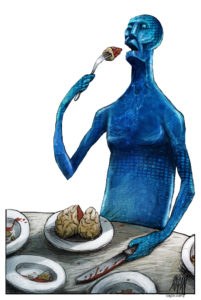
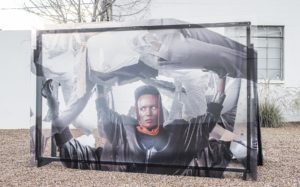
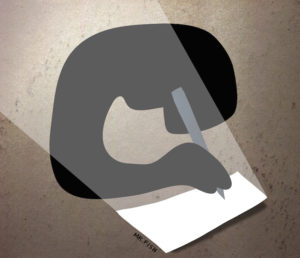
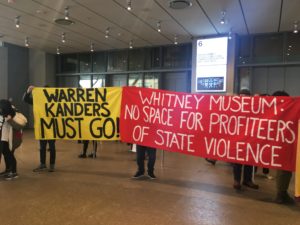

You need to be a supporter to comment.
There are currently no responses to this article.
Be the first to respond.